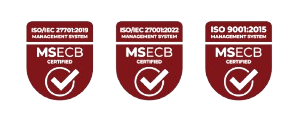Mergers and acquisitions (M&A) are like corporate marriages. They’re exciting, full of potential, and can lead to incredible growth. But just like any marriage, they come with their fair share of challenges—especially when it comes to integrating two different systems, cultures, and processes. One of the biggest hurdles? Managing identities and access across the newly formed organization.
Enter Identity and Access Management (IAM), the unsung hero of M&A success. IAM ensures that the right people have access to the right resources at the right time—something that’s absolutely critical during the chaos of a merger or acquisition. In this blog, we’ll break down the best practices for implementing IAM during M&A, share practical use cases, and show you how solutions like Seamfix iAM can make the process smoother than ever.
Why IAM Matters in Mergers and Acquisitions
Let’s start with the basics. IAM, or Identity and Access Management, is all about managing who has access to what within an organization. During an M&A, this becomes even more important because you’re essentially combining two (or more) separate entities into one. Without a solid IAM strategy, you could end up with:
- Security Risks: Unauthorized access to sensitive data or systems.
- Compliance Issues: Failing to meet regulatory requirements.
- Operational Chaos: Employees unable to access the tools they need to do their jobs.
- Cultural Friction: Confusion and frustration as teams struggle to navigate new systems.
In short, IAM is the glue that holds everything together during an M&A. It ensures a seamless transition, protects sensitive data, and sets the stage for long-term success.
Best Practices for IAM During Mergers and Acquisitions
Implementing IAM during an M&A doesn’t have to be a nightmare. Here are some best practices to guide you through the process:
1. Start Early
- Don’t wait until the deal is done to think about IAM. Include it in your M&A planning from the very beginning.
- Identify key stakeholders, including IT, security, and HR teams, to ensure everyone is on the same page.
2. Assess Both Environments
- Take stock of the IAM systems and processes in both organizations. What’s working? What’s not? Where are the gaps?
- Look for overlaps and redundancies that can be streamlined.
3. Define Clear Objectives
- What do you want to achieve with your IAM strategy? Common goals include improving security, ensuring compliance, and enhancing user experience.
- Set measurable objectives to track your progress.
4. Choose the Right IAM Solution
- Look for a solution that’s flexible, scalable, and easy to integrate. This is where Seamfix iAM shines—it’s designed to adapt to your organization’s unique needs, making it a great choice for M&A scenarios.
5. Prioritize Security and Compliance
- M&A activities often involve sharing sensitive data. Make sure your IAM solution includes robust security features like Multi-Factor Authentication (MFA) and encryption.
- Ensure compliance with relevant regulations (e.g., GDPR, HIPAA) to avoid costly fines.
6. Communicate and Train
- Keep employees informed about the changes and how they’ll be affected.
- Provide training and resources to help them navigate the new systems.
7. Monitor and Optimize
- Once the integration is complete, keep an eye on how the IAM system is performing. Are there any issues or bottlenecks? Use this feedback to make improvements.
Practical Use Cases for IAM in M&A
Still not convinced? Here are some real-world examples of how IAM can make a difference during a merger or acquisition:
1. Streamlining User Onboarding
- When two companies merge, there’s often a flood of new users who need access to systems and applications. IAM automates this process, ensuring that new employees get the access they need quickly and securely.
2. Managing Access for Departing Employees
- On the flip side, there may be employees who leave the organization as a result of the merger. IAM ensures that their access is revoked promptly, reducing the risk of security breaches.
3. Integrating IT Systems
- Merging IT systems can be a logistical nightmare. IAM simplifies this by providing a centralized platform for managing identities and access across both organizations.
4. Ensuring Compliance
- M&A activities often involve sharing sensitive data, which can trigger compliance requirements. IAM helps ensure that data is handled securely and in accordance with regulations.
5. Enhancing User Experience
- A well-implemented IAM system can make life easier for employees by providing Single Sign-On (SSO) and other user-friendly features. This reduces friction and helps teams stay productive during the transition.
How Seamfix iAM Can Help
Now, let’s talk about how Seamfix iAM can make your M&A journey smoother. Seamfix iAM is a modern IAM solution that’s designed to handle the complexities of mergers and acquisitions. Here’s why it’s a great fit:
- Scalability: Whether you’re merging two small companies or integrating a large enterprise, Seamfix iAM can scale to meet your needs.
- Flexibility: Seamfix iAM supports a wide range of authentication methods, including MFA and SSO, making it easy to adapt to different environments.
- Security: With features like adaptive authentication and encryption, Seamfix iAM ensures that your data stays secure throughout the M&A process.
- User-Friendly: Seamfix iAM is designed with the end-user in mind, making it easy for employees to navigate and adopt.
For example, imagine a scenario where two companies are merging. With Seamfix iAM, you can quickly onboard new users, integrate IT systems, and ensure compliance—all while keeping security tight and user experience smooth.
Tips for a Successful IAM Implementation During M&A
Here are some additional tips to ensure your IAM implementation goes off without a hitch:
- Involve Key Stakeholders: Get input from IT, security, HR, and other relevant teams to ensure everyone’s needs are met.
- Test Before You Go Live: Run pilot programs to test the IAM system and identify any issues before rolling it out organization-wide.
- Celebrate Wins: Acknowledge milestones and successes along the way to keep morale high and teams motivated.
Final Thoughts
Mergers and acquisitions are complex, but they don’t have to be chaotic. With a solid IAM strategy in place, you can navigate the challenges, protect your data, and set your newly formed organization up for success.
And with solutions like Seamfix iAM, implementing IAM during an M&A has never been easier. It’s designed to handle the unique demands of mergers and acquisitions, making it the perfect choice for businesses looking to streamline their integration process.
So, if you’re planning an M&A, don’t overlook the importance of IAM. It’s the key to a smooth transition, a secure future, and a happy corporate marriage.
Ready to learn more about how Seamfix iAM can support your M&A journey? Check out their website here.









